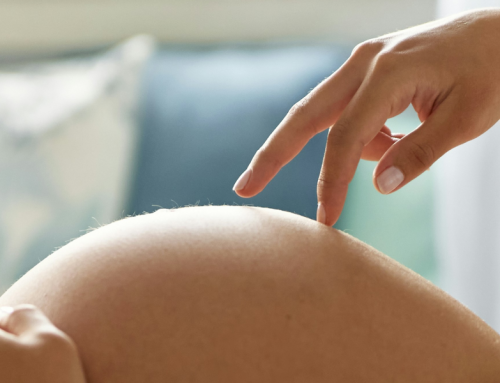Uterine retroversion is an anatomical change in the orientation of the cervix. Complications due to a tilted uterus are rare, even in pregnancy. In other words, having a retroverted uterus or retroversion of the uterus does not mean that a disease is present. Most women (nearly 70%) have their cervix tilted forwards (towards the navel); in the rest (3 out of 10 women), the cervix is tilted backwards.
A retroverted uterus may be diagnosed during a routine gynaecological examination, usually the first time a woman sees a specialist. Sometimes an ultrasound scan is used to confirm the presence of a retroverted uterus and to rule out more serious causes, such as uterine fibroids or endometriosis.
However, although a retroverted uterus generally does not cause health problems, questions often arise about the extent to which retroversion of the uterus affects fertility, sexual intercourse or menstruation. In this regard, a retroverted uterus should not affect fertility. Therefore, if you are unable to get pregnant, we recommend that you contact your gynaecological specialist.
What are the symptoms of a retroverted uterus?
Women who have a retroverted uterus, either from birth (congenital causes) or developed in their adolescence or adulthood (acquired causes), may live their entire lives without knowing it, as the symptoms of a retroverted uterus are not usually visible. Occasionally, when problems associated with a retroverted uterus occur, patients mention:
- Pelvic pain, especially when passing stools, which can lead to chronic constipation.
- Severe menstrual symptoms or problems inserting a tampon.
- Lower back pain.
- Pain in certain areas during sexual intercourse (dyspareunia) due to the penis hitting the cervix.
- Mild urinary incontinence.
What causes a retroverted uterus?
When the cause of a retroverted uterus is congenital, it means that in the baby’s foetal development the anatomical position of her cervix has been modified and, therefore, she will have a retroverted uterus at birth. When the cause of a retroverted uterus is acquired, it is usually a result of some external situation that may have altered the anatomical position of the uterus:
- Due to the presence of scar tissue that adheres to the uterine wall and exerts traction by shifting the position of the cervix backwards.
- Endometriosis.
- Pelvic surgery.
- Caesarean sections.
- Miscarriages.
- Inflammation of the fallopian tubes.
- Pelvic inflammatory disease.
- Due to the presence of uterine growths.
- Uterine fibroids.
- Tumours.
- Due to hormonal changes.
- Low oestrogen levels during menopause.
Retroverted uterus and pregnancy
Uterine retroversion was long believed to be associated with problems in getting pregnant. Evidence now indicates that the position of the uterus does not affect a woman’s fertility or her chances of having a normal pregnancy. Only in the case of pain or discomfort during intercourse at penetration (dyspareunia) is the genupectoral position (face down on her knees so that the woman is supported while the man is behind her) recommended.
There is no correlation between a retroverted uterus and complications during labour or the moment of delivery itself. In fact, pregnancy will cause your uterus to shift into one position. This is because the uterus usually expands beyond the pelvis after the first trimester and adjusts to the typical forward position only to return to its position postpartum.
However, if a woman has a condition such as endometriosis (which can cause a retroverted uterus), this may make conception difficult, but this is due to the condition itself, not the tilt of her uterus.
Treatments for a retroverted uterus
The vast majority of women who have a congenital retroverted uterus that has never caused symptoms do not require treatment. In fact, they can lead a completely normal life.
It is only in certain cases that a retroverted uterus may require treatment:
- To treat a medical condition that has caused uterine problems (such as endometriosis or fibroids).
- Insert a pessary. These are doughnut-shaped silicone devices that are placed under the uterus and hold it in place. Pessaries can be placed temporarily or permanently to re-orient the uterus. They increase the risk of inflammation and infection, so if you decide to have a pessary fitted, you should always contact your health care professional if you notice something is wrong.
- Minimally invasive laparoscopic surgery may be recommended in some situations.
In conclusion, having a retroverted uterus is regarded as normal; it is an anatomical change in the orientation of the cervix that does not entail any health complications. Situations that require treatment are very rare, and those that do are usually due to the acquired causes that have led to the backward uterine re-orientation.
Women with uterine retroversion should not worry about fertility or other potential problems, as these are very rare. It can help reduce the anxiety associated with having a retroverted uterus by educating yourself and staying informed about the condition.






